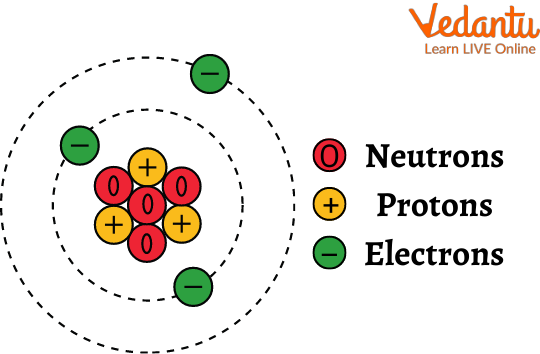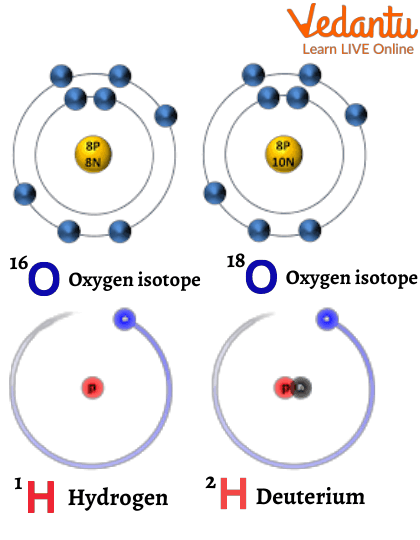




An Introduction to the Isotopes
Whenever we see the world around us, there is always something present. Everything in this world is made up of atoms. And they are further divided. Just a minute: Confused? Don't worry, we know that it sounds a little tricky but in this article all your doubts will be cleared about the type of atom that is isotopes in a very fun and easy way.
So, today in this article, we are going to discuss isotopes. We will learn what are isotopes, their examples, and uses of isotopes. So now, let's get started.

Isotopes
What are Isotopes?
We know that every element is distinguished by the number of electrons, protons and neutrons that they possess. So we can say that each element has its own unique atoms which have a specific number of protons present in it and the number of protons decides the atomic number of the elements.
Each atom has the same number of electrons as protons, but in the case of isotopes they are a little bit different; they have the same number of electrons and protons but different numbers of neutrons. But isotopes have the same atomic number and also the same position in the periodic table but they have different atomic masses.
Remember one thing, changing the number of neutrons in an atom does not change its element.
So we can say that isotopes are two or more forms of a chemical element which have different chemical properties but the same physical properties.
We should know that every chemical element has isotopes but they can have one or more isotopes. Moreover, they have almost the same chemical properties but they vary in mass.
There are two types of isotopes:

Isotopes of Hydrogen and Oxygen
Stable Isotopes
These types of isotopes will decay over time and will turn into another isotope or another element. Most elements which are found in nature are made of stable isotopes.
Unstable Isotopes
They emit radiation and are also called radioisotopes. When radioisotopes undergo radioactive decay, the initial isotope is called the parent isotope and the atoms produced by the reaction are called daughter isotopes.
The technique used to measure the number and proportion of isotopes in matter and trace their origin history and source of origin is called nuclear technology.
With these measurements, the experts understand what volume of certain vitamins are absorbed by the body, and the number of fertiliser plants take up and many more.
Example of Isotopes
Carbon 12
Carbon 14
Uranium 235
Uranium 238
Deuterium
Uses of Isotopes
The uses of isotopes are as follows:
Carbon 14 is an isotope of carbon which is used in carbon dating. The amount of carbon present in the fossils helps in calculating the age of fossils.
The isotopes of Uranium such as U-235 are used as a fossil fuel in nuclear reactors.
Radioactive isotopes are generally used for medicinal purposes, for example, for detecting cancerous cells.
Iodine is an isotope of carbon which is used in the treatment of goitre.
Facts About Isotopes
The facts about isotopes are as follows:
Hydrogen is the only element whose isotopes are given a unique name.
Hydrogen is the element which has the fewest number of isotopes.
Cesium and xenon are the elements which have the highest number of isotopes.
All man-made elements are radioactive isotopes.
The reaction of the isotopes of the same element also differs as heavier isotopes of the same element react more slowly than lighter isotopes of the same element.
Twenty-six elements are there which have only one stable isotope and they are called monoisotopic.
Isotopes of iodine are used to treat goitre disease and isotopes of iodine are also used to locate tumours of the brain and liver.
Cobalt 60 is the radioactive isotope used in treatment of cancer.
Summary
So in this article, we learnt about isotopes in an interesting way. Now we can understand that isotopes are not nearly as scary as we had first imagined. It's actually one of the most interesting topics, isn't it? We learnt in this article what are Isotopes, what are the examples of Isotopes, and what are more than 5 uses of Isotopes in daily life. We also discussed the amazing fun facts about Isotopes. We discussed facts like the isotope of iodine is used to treat the disease called goitre, and Cobalt 60 is an isotope which is used in the treatment of cancer. We hope you enjoyed reading this article.
FAQs on Isotopes
1. Which element has no isotopes?
Neon has no isotopes.
2. What are the requirements to identify isotopes?
To identify an isotope, there are two requirements, which are atomic number and mass number.
3. Are isotopes safe?
When isotopes are used in carefully controlled medical applications, they are safe.









